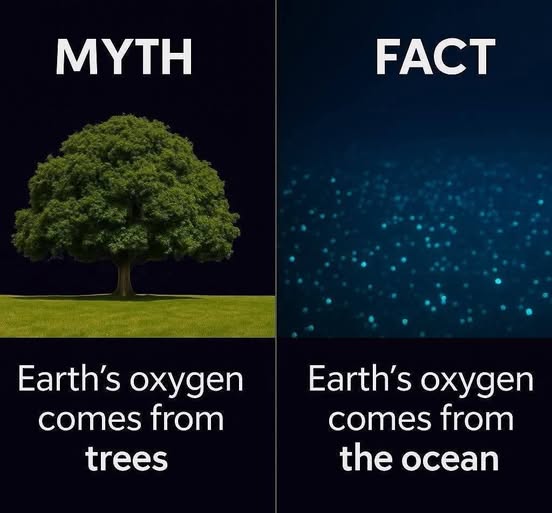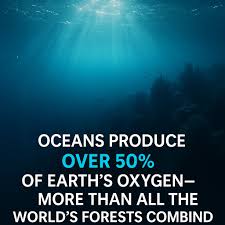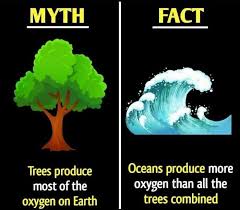Earth’s oxygen comes from the ocean – not trees.
- James Smith
- 0
- Posted on

When we think of the planet’s oxygen supply, lush green forests, especially the Amazon Rainforest, often come to mind. They’re sometimes referred to as the “lungs of the Earth.” While forests do play a significant role in absorbing carbon dioxide and releasing oxygen, the truth is that the majority of Earth’s oxygen comes from the ocean, not trees.
The Real Lungs of the Planet: The Ocean
Approximately 70% of the Earth’s oxygen is produced by marine plants, most notably phytoplankton. These microscopic organisms float near the surface of oceans and harness sunlight through photosynthesis, just like land plants. In doing so, they produce oxygen as a byproduct.
Phytoplankton, along with other types of algae and some bacteria, form the base of the oceanic food chain. But beyond feeding marine creatures, they serve an even more critical role: they oxygenate the atmosphere.
What Are Phytoplankton?
Phytoplankton are tiny, single-celled organisms that function much like terrestrial plants. They live in the sunlit upper layers of the ocean and convert carbon dioxide and sunlight into energy through photosynthesis, releasing oxygen in the process.
Key groups of phytoplankton include:
- Diatoms – responsible for a significant share of global oxygen.
- Cyanobacteria – some of the oldest oxygen-producing organisms on Earth.
- Dinoflagellates – both photosynthetic and sometimes bioluminescent.
Together, they contribute to half to 70% of the oxygen we breathe.

Why the Ocean’s Role Is Overlooked
The misconception that forests are the main source of oxygen is partly because they are visible and tangible. Forests can be touched, photographed, and easily studied. The ocean, vast and largely unexplored, hides its microscopic oxygen factories beneath the waves.
Additionally, campaigns to save rainforests, such as the Amazon, have (rightly) highlighted their importance in biodiversity, carbon storage, and climate regulation. But in terms of oxygen generation, the ocean takes the lead.
Trees Still Matter – A Lot
Though marine phytoplankton produce more oxygen, trees and forests are still crucial to life on Earth. Forests absorb carbon dioxide, regulate local climates, stabilize soils, and support vast ecosystems.
Moreover, they act as carbon sinks, helping to reduce the impact of human-caused greenhouse gas emissions. And while the oxygen trees produce is less than the ocean’s share, they still contribute meaningfully to the balance of gases in the atmosphere.
The Threat to Oceanic Oxygen Production
The health of phytoplankton and marine ecosystems is increasingly under threat due to:
- Climate change – Warmer waters reduce nutrient mixing, affecting phytoplankton growth.
- Pollution – Runoff from agriculture and industry causes dead zones with low oxygen.
- Ocean acidification – Excess CO₂ changes water chemistry, harming marine life.
- Overfishing – Disrupts the balance of marine food chains, indirectly affecting phytoplankton.
A decline in oceanic oxygen production would be catastrophic for life on Earth. Without enough phytoplankton, the balance of atmospheric gases would shift, with ripple effects across all ecosystems.
Conclusion
While trees are vital and deserve protection, it’s important to recognize that the oceans — and the tiny organisms within them — are the planet’s primary oxygen source. The phrase “lungs of the Earth” might be better applied to the sea than the forest.
Preserving marine ecosystems, combating climate change, and reducing ocean pollution are essential not just for marine life but for all life on Earth. After all, every second breath we take likely comes from the ocean.
